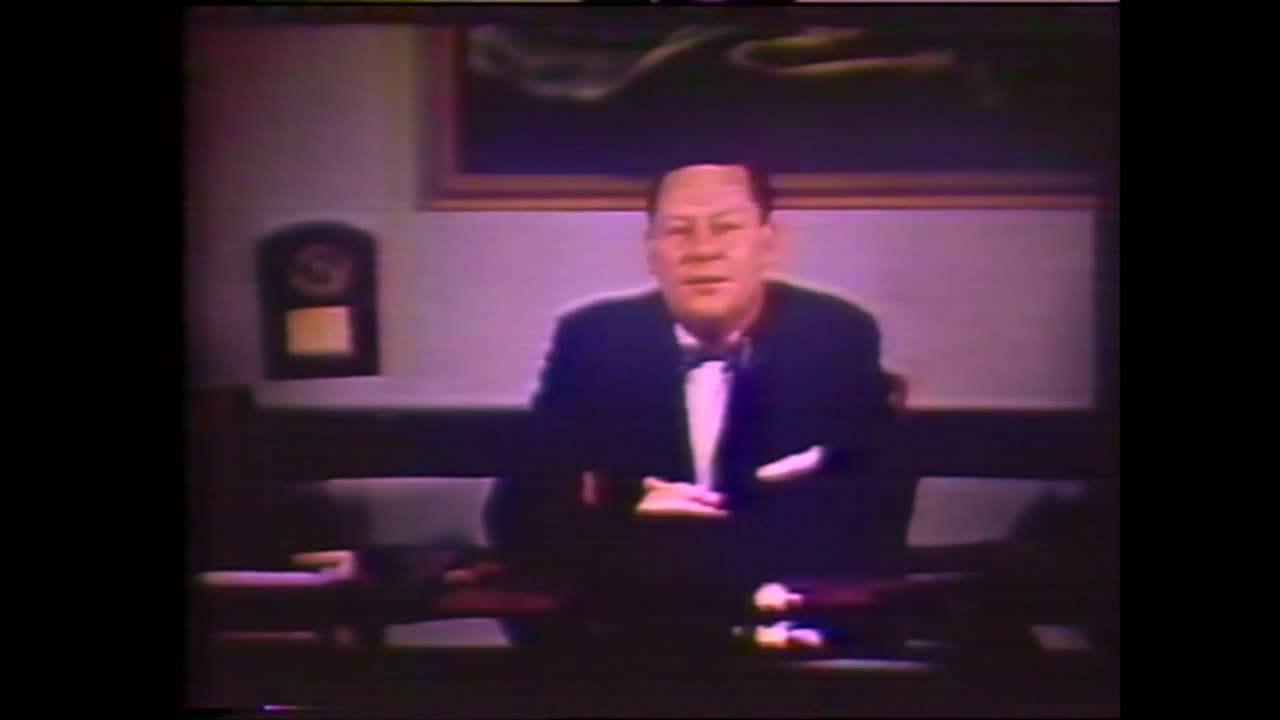
Historical documentary about living in Indianapolis, Indiana in the 1950s
Written and Produced by Dave Stoelk;
Executive Producer: Michael Atwood;
Videographer: Tim Swartz;
Associate Producer: Amy Sterner;
Original Music Composed and Produced: Tim Brickley;
Chief Editor: Andrew Birkhead;
Narrated by Mike Ahern;
Associate Producers: Marshall Curry, Rick Maultra & Melissa Lingwall Swartz;
Post Production: Mark O. Bradley & David Tarr;
Videography: Frank Konermann & Sean Murphy Gilson;
Production Coordinator: David DeMunbrun;
Film Logging/Research: Kurt Christopher;
Visual Research: Deborah Markisohn & Pete Bailey;
Primary Research: Amy Sterner & Marshall Curry;
Film Transfer: Tom Barker;
Director of Photography: Karl L. Hall Koch;
Dolly Grip: Tom Pielemeier;
Assistant Director: Kent Smith;
Audio/Rear Screen: Rodney Myers;
Production Assistance: John O'Connor, Erik A.D. Sears, Bob Gill & Melissa Nash
----------
Indy in the 50s
Video (2:00:43)
Notes by Jessica VanAllen
Synopsis: This video is a a special narrated by Mike Ahern about Indianapolis in the fifties. We learn about the good and bad things that happened in the era after WWII, focusing on suburban life, segregation, youth, and technology.
0:03 video starts, montage of clips and interviews about Indianapolis
1:45 before the 50s, starts with clips and info about the motor speedway before it became famous, explains what life was like in Indy after the Great Depression and during WWII
3:27 moves into the 50s, Mike Ahern introduces special
4:45 mayor of Indy in the 50s talking to audience,
*5:07 goal and idea of the 50s and what the veterans wanted to come home to, veterans wanted to move out of small apartments, people couldn’t afford homes, suburban housing started up, assembly line of building
9:13 G.I. bill of rights, veterans could buy a house with no down payment
10:03 suburbia was colorful and bright, unlike the gray, drab city
10:45 jobs for veterans, General Motors, AT&T sets up shop in Indy, industry and jobs made out of farmland, farms become factories, Chrysler, telephones, growth in business industry and jobs, technology and suburbia, shopping malls
*16:23 problems in the 50s, segregation, not able to live in the Suburbs (deliberately blocked or didn’t have money), lived in the inner city
*17:58 polio in Indy, Eli Lilly rushes vaccines over the world, based in Indy
18:50 motor speedway
20:04 Michael Atwood and Jim Gerard talk
28:43 cars, functional and stylish, promised a new personality, built to look pretty
30:45 baby boomers, high school in the 50s
34:50 all Black high school, Attucks, more qualified and impressive teachers
36:13 teenagers defined themselves by their appearance, fashion became a big thing, clothes become a status symbol
38:38 after school activities, drive in, cruising
43:30 Butler sectional, event of the year, excused absence from school
45:00 Attucks high school competed in 1955, used to not be allowed to play against other schools because they were Black, they dominated against the other schools, Oscar Robertson
50:00 Atwood and Gerard talk again, trying to sell VHS tapes of the show
58:51 Cold War, fear of nuclear bombs, 1956 Nixon comes to Indy, Indy was on the home front of the Cold War, chapter founded at American Civil Liberties Union, leaning towards communist views, American Legion protests
1:01:25 Edward R Murrow does documentary on the issue, controversy over communism in Indy
1:03:58 summer in Indy, pools, skating, rollercoasters, baseball, hoola hoops
1:06:11 Indy 500, Jimmy Bryan
1:11: 38 first television broadcast was about Indy 500, TV comes to Indy, jobs created, WTTV
1:15:25 Debbie Drake, exercise, Kindergarten College
*1:16:08 all local television live, Howard Caldwell talks about TV in the 50s
1:17:10 Gilbert Forbes, Howard Caldwell, Bill Crawford
1:17:55 Indy radio, “Bouncin” Bill Baker
1:20:20 Atwood and Gerard talk again
1:29:13 Rock n Roll, Elvis, pressed his albums, Bill Baker got calls from Elvis, new style of music, jazz (Indiana Avenue)
1:35:05 downtown Indy, the circle, transportation, shopping, L.S. Ayres and Co.
1:45:27 away from downtown, Ayres in Glendale, everything moves to the suburbs, Castleton (population was 258 in the 50s)
1:47:52 the end, credits start
Website clips:
[Text Wrapping Break]
This clip was interesting to me because it explains the goal of many veterans when they returned home from war: to buy a house, get a job, and start a family.
5:07 IC: “I think there existed in the minds of many people…”
8:06 OC: “their next door neighbor… and their next door neighbor”
[Text Wrapping Break]
This segment talks about the main problems during the fifties, focusing on segregation and polio. It puts the era that Caldwell started to make a name for himself into focus.
16:23 IC: “The American dream came true…”
18:18 OC: “all over the world”
[Text Wrapping Break]
We learn about television in the fifties. Caldwell talks about his experience, and Ahern explains the early days of broadcasting in Indy, with Gilbert Forbes, Caldwell, and Bill Crawford.
1:16:08 IC: “Until channel 8 got ahold…”
1:17:46 OC: “come back and do the late weather”